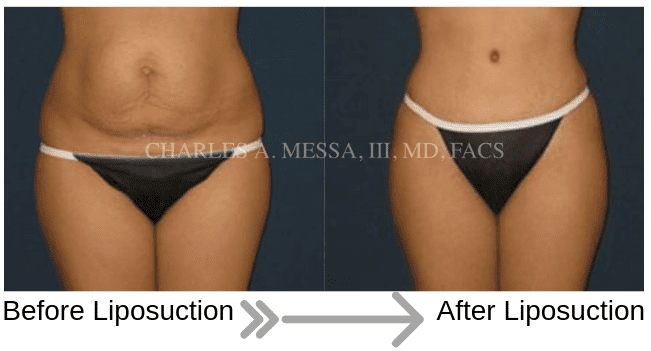Posted April 01, 2019 in Liposuction
Many patients ramp up their daily exercise routine and change their eating habits but become frustrated when they still see stubborn fat deposits on their body. Working out your core and other specific areas can help build muscle, but may not be enough to target stubborn fat. Liposuction is designed to target these areas of concern. Body sculpting methods to achieve the ideal body contour have been growing in popularity, and liposuction was listed as one of the top five procedures conducted annually. According to a recent press release by plasticsurgery.org, there were 258,558 liposuction procedures performed in 2018, which is a five percent increase from 2017, making liposuction the second most popular procedure performed overall.

Treatment Areas
Liposuction can treat multiple areas, including the stomach, hips, flanks, lower back, arms, buttocks, and thighs. Two of the most common issues patients want to resolve are post-pregnancy fat and a lack of abdominal muscle definition, which is usually due to a layer of fat blocking the muscles. Dr. Messa and his team are devoted to providing the most outstanding results possible, so it is important to provide your medical history and discuss your concerns, goals, and preferences during your consultation. Communicating this information will help Dr. Messa create a detailed, customized treatment plan to achieve your desired outcome.
How It Works
The liposuction process includes administering local or general anesthesia, depending on what you prefer and what Dr. Messa recommends. Incisions are made in inconspicuous locations in the targeted areas, and fat is gently removed through a thin, hollow suctioning tube (cannula). Dr. Messa may also use ultrasound, lasers, or a tumescent fluid to help ensure precision by liquefying fat prior to removal. In some cases, the harvested fat cells can be purified and then injected into another area of the body, such as the face or breasts, for added volume. This process is known as fat grafting or fat transfer. Once the procedure is completed, the incisions are closed with sutures. Recovery times will vary for every patient, and post-surgical care instructions will be provided. Support garments and surgical dressings are typically used for the first week to ensure a comfortable recovery and to promote healing. Most patients can resume daily activities within three days but should avoid strenuous exercise for up to one month. Discomfort can be alleviated with prescription medications while patients recuperate.

Expected Results
Excess fat in the regions addressed by liposuction is eliminated, and patients experience a tighter, more toned appearance. This defined body contour leads to enhanced satisfaction with your physical appearance and can introduce additional clothing options for most patients.
If your stubborn fat deposits are resistant to diet and exercise, call our office today at (954) 659-7760 or (877) 250-8117 to schedule a consultation.